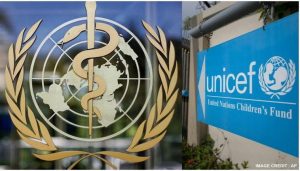New Report Released By The United Nations Children’s Fund (UNICEF):

According to a new report released by the United Nations Children’s Fund (UNICEF), one in five children worldwide resides in areas of high or extremely high water vulnerability.
- The Report was released ahead of World Water Day (22nd March).
- The new report is part of UNICEF’s ‘Water security for all’ initiative that identifies areas where physical water scarcity risks overlap with poor water service levels.
- The initiative aims to mobilise resources, partnerships, innovation and global response to identified hot spots.
- UNICEF identified 37 hot-spot countries where children faced especially distressing circumstances in terms of absolute numbers, where global resources, support and urgent action had to be mobilised.
- Afghanistan, Burkina Faso, Ethiopia, Haiti, Kenya, Niger, Nigeria, Pakistan, Papua New Guinea, Sudan, Tanzania and Yemen were especially vulnerable.
Findings:
- Children in more than 80 countries live in areas with high or extremely high water vulnerability.
- Eastern and Southern Africa has the highest proportion of children living in such areas, with more than half of children – 58% – facing difficulty accessing sufficient water every day.
- It is followed by West and Central Africa (31%), South Asia (25%), and the Middle East (23%).
- More than 155 million children in South Asia lived in areas with high or even extremely high water vulnerability.
Water Crisis in India:
- India has 4% of the world’s freshwater which has to cater to 17% of the world’s population.
- As per NITI Aayog report released in June 2018, India is facing the worst-ever water crisis in history. Approximately 600 million people or roughly around 45% of the population in India is facing high to severe water stress.
- The report says that nearly 40% of the population will have absolutely no access to drinking water by 2030 and 6% of India’s GDP will be lost by 2050 due to the water crisis.




